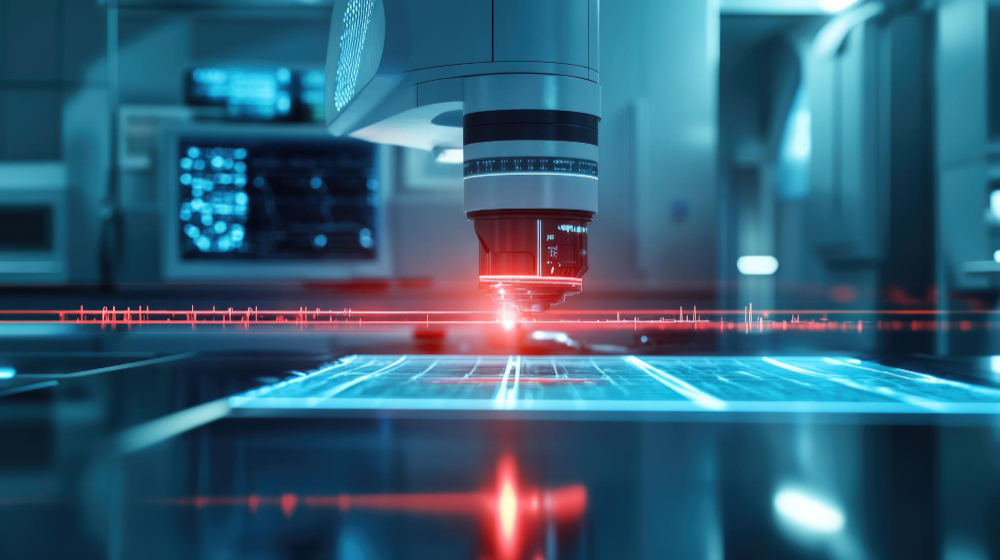Laser Scanning: An In-Depth Guide to the Technology, Its Types, and Importance
Laser scanning is a revolutionary technology that enables the precise measurement and mapping of objects, environments, and surfaces by using laser beams. It plays a key role in a wide variety of fields, such as architecture, engineering, construction, environmental science, archaeology, and even filmmaking. This technology works by emitting laser beams from a scanner, which reflect off surfaces, with the time it takes for the light to return being recorded. This data is then used to generate accurate, detailed 3D models or maps.
In this article, we will explore the concept of laser scanning, the different types of laser scanning, and its importance across industries.
What Is Laser Scanning?
Laser scanning, often referred to as LiDAR (Light Detection and Ranging) or 3D scanning, is a technique that utilizes laser beams to collect data points from the surface of objects. These data points represent the distance between the scanner and the object, calculated based on the time it takes for the laser to hit the object and reflect. This results in a “point cloud,” which is essentially a collection of millions of data points that can be processed to create a precise 3D digital model.
The primary advantage of laser scanning is its ability to capture complex geometries and large environments with a high degree of accuracy and detail in a relatively short amount of time. Compared to traditional measurement methods, laser scanning can be exponentially faster while also reducing human error.
Types of Laser Scanning
There are three main types of laser scanning technologies: satellite laser scanning, airborne laser scanning, and terrestrial laser scanning. Each type serves a unique purpose depending on the scope and the area that needs to be scanned.
1. Satellite Laser Scanning
Satellite laser scanning, also known as spaceborne laser scanning, involves lasers mounted on satellites orbiting the Earth. These lasers are used to measure the Earth’s surface and can map large-scale environments, from vast landscapes to urban areas. This technology has become instrumental in climate studies, topography, forest management, and disaster response.
Applications of Satellite Laser Scanning:
- Climate Change and Environmental Monitoring: Satellite laser scanning helps scientists monitor deforestation, glacier movements, and sea-level changes. By comparing scans taken over time, researchers can observe environmental changes on a global scale, making this an essential tool for studying climate change.
- Urban Planning and Development: The ability to collect data on cities and urban areas from space allows for large-scale infrastructure planning and population growth studies.
- Disaster Management: Satellite laser scanning can be used to assess damage caused by natural disasters such as earthquakes, floods, and hurricanes. It provides real-time data for emergency responses and recovery planning.
One of the best-known examples of this technology is NASA’s ICESat-2 (Ice, Cloud, and Land Elevation Satellite), which measures ice sheet elevations, forest canopy heights, and more.
2. Airborne Laser Scanning
Airborne laser scanning, often referred to as LiDAR when applied in this context, is performed by mounting a laser scanner on an aircraft, helicopter, or drone. As the aircraft flies over a target area, the laser scanner emits thousands of laser pulses per second towards the ground. These pulses then reflect to the scanner, and the time-of-flight (ToF) is used to calculate distances, which can be converted into topographical maps or 3D models.
Applications of Airborne Laser Scanning:
- Geographical Information Systems (GIS): Airborne laser scanning is widely used in GIS to generate accurate digital elevation models (DEMs) and 3D topographical maps. This data is crucial for floodplain mapping, land-use planning, and environmental conservation.
- Forestry Management: LiDAR is used to analyze forest structures by calculating tree heights, canopy density, and forest biomass. This helps in forest monitoring, resource management, and wildfire risk assessment.
- Infrastructure and Urban Mapping: Municipalities use airborne laser scanning to map cities and urban regions, helping with planning for new infrastructure projects, monitoring traffic patterns, and managing utilities.
One advantage of airborne scanning is its ability to cover vast areas quickly, making it ideal for surveying inaccessible regions such as dense forests, mountains, and large river systems.
3. Terrestrial Laser Scanning
Terrestrial laser scanning involves the use of stationary ground-based scanners that are typically mounted on tripods or other platforms. These scanners rotate around a fixed point and capture the environment in 360 degrees. Unlike airborne or satellite scanning, terrestrial laser scanning provides highly detailed and accurate scans of objects within a smaller range.
Applications of Terrestrial Laser Scanning:
- Architecture and Construction: Terrestrial laser scanning is widely used in the construction industry for surveying buildings, bridges, and other infrastructure. Scans can help identify structural issues, monitor progress, and create precise as-built models.
- Heritage Preservation: This technology is often used to create digital replicas of historical monuments, ancient buildings, and archaeological sites. These digital replicas help preserve and restore cultural heritage.
- Industrial Inspections: Terrestrial laser scanning is used to inspect manufacturing facilities, pipelines, and machinery. It allows engineers to detect potential wear and tear or damage, making maintenance more efficient.
The detailed and accurate data provided by terrestrial laser scanning is essential for professionals working in fields that require precise measurements, such as civil engineering, architecture, and construction.
The Importance of Laser Scanning
Laser scanning has become an invaluable tool in modern industries due to its unparalleled precision, speed, and versatility. Below are some key reasons why laser scanning is important:
1. High Accuracy and Precision
Laser scanning produces data with a level of accuracy that traditional surveying methods cannot match. The technology can capture details down to millimeter-level precision, making it ideal for industries where even the smallest measurement errors can have significant consequences, such as construction, engineering, and manufacturing.
2. Time-Efficiency
Laser scanning drastically reduces the amount of time needed for surveying and data collection. Traditional surveying techniques may take days or weeks to complete large-scale projects, whereas laser scanning can collect data in hours. This saves time and resources, allowing projects to be completed faster.
3. Comprehensive Data Collection
Laser scanning captures millions of data points in a short period, resulting in a highly detailed point cloud that can be processed into a 3D model or map. These models are not only accurate but also rich in detail, providing comprehensive information that can be analyzed and manipulated for various purposes.
4. Non-Contact Measurement
Laser scanning is a non-invasive technology, which means there is no need for physical contact with the object being scanned. This is particularly useful when working with delicate or hazardous materials, such as historical artefacts, contaminated areas, or dangerous construction sites.
5. Versatility Across Multiple Industries
Laser scanning is versatile enough to be used in a wide range of industries, including:
- Construction: For as-built models and progress tracking.
- Archaeology: To digitally preserve and analyze historical sites.
- Automotive and Aerospace: To inspect components and detect manufacturing defects.
- Environmental Science: To monitor natural ecosystems and study changes in landscapes.
- Healthcare: For creating accurate prosthetics and detailed imaging of the human body.
Conclusion
Laser scanning is an essential technology that is transforming the way we measure, map, and analyze the world around us. With its ability to generate highly accurate 3D models in a fraction of the time required by traditional methods, it has found applications in numerous industries, from construction and environmental monitoring to archaeology and industrial inspections.
The future of laser scanning looks even more promising with the continued advancement of the technology. As laser scanning becomes more affordable and accessible, its potential applications are expected to expand, bringing unprecedented precision and efficiency to various fields. Whether you’re planning a new infrastructure project, preserving a historical site, or conducting environmental studies, laser scanning is likely to play a critical role in your work.

















